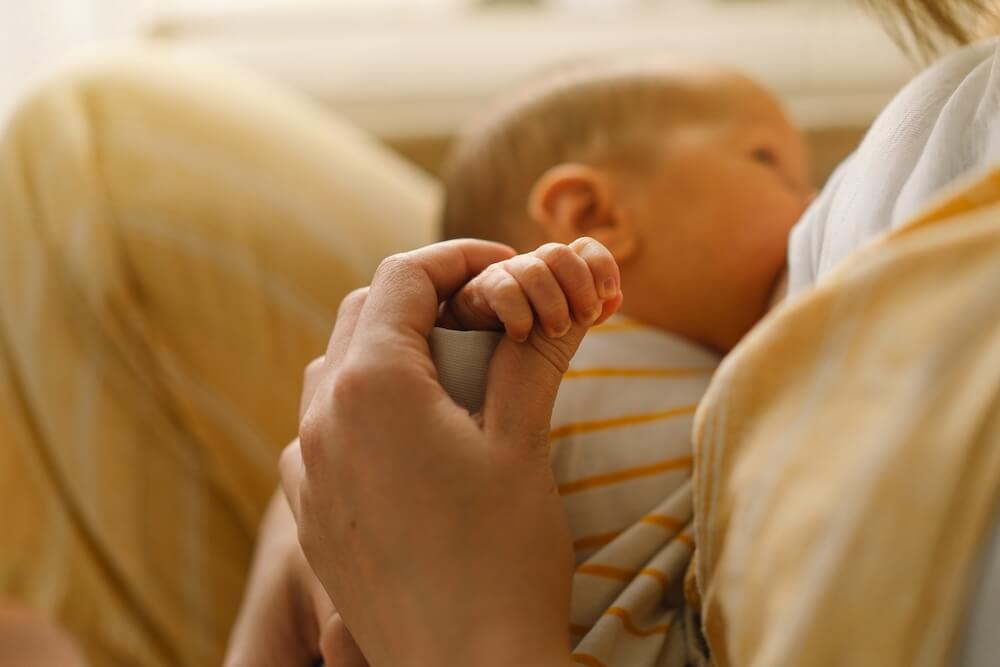Breastfeeding is a special moment for the bond between mother and baby, providing significant benefits for the infant’s health and development. It’s natural for mothers to seek ways to make this process more comfortable and efficient, looking for solutions that can assist them on this journey. However, it’s important to learn more about them. In this article, we will discuss breast shells.
What is a breast shell?
Breast shells are a breastfeeding product designed for women who have nipples that are inverted, sore, or tend to leak milk. Breast shells are made of two parts, usually made of silicone or plastic, that you wear over your breasts:
- The first part is a round ring that goes over your areola (the darker area around your nipple). It has a hole in the center where your nipple can stick out. This part applies a gentle pressure to the base of your nipple, but it should not be painful.
- The second part is a dome-shaped piece that fits over the bottom ring. It serves two purposes: protecting your nipple and collecting any breast milk that might leak while you’re wearing the breast shells.
What are breast shells used for?
Here are some ways breast shells are used for:
- Protecting sore and cracked nipples: They create a barrier between your nipple and your nursing bra or clothes, preventing further rubbing and allowing your nipples to heal faster.
- Promoting healing: By preventing pain and irritation, breast shells can contribute to quick healing of sore nipples.
- Relieving mild breast engorgement: The slight and constant pressure from breast shells on your nipple can help some breast milk drain slowly, which can alleviate mild engorgement.
- Preventing leaks: Breast shells can prevent leaks and protect your clothing from getting stained.
What precautions should I have when using a breast shell?
Breast shells should always be removed before you nurse your child. Also, bacteria and fungus can grow in warm, dark, moist areas. Breast milk that leaks into breast shells can become contaminated with these organisms. Therefore, you should not store or feed your baby any of the breast milk that you collect in your breast shells between feedings.
If you’re experiencing nipple sensitivity and are using plastic breast shells for inverted nipples, remove them after thirty minutes as they can trap moisture. Similarly, avoid plastic-lined nursing pads for the same reason.
Always keep your breasts and your breast shells clean and dry to prevent some of the common problems of breastfeeding such as skin breakdown, rashes, sore nipples, thrush, and mastitis. Breast shells are easy to clean. Wash them with warm soapy water every day, and allow them to dry thoroughly.
Breast shells, which use gentle suction to try to bring out the nipple, are not widely supported by medical evidence. There are concerns that suggesting their use during pregnancy might wrongly imply that breastfeeding will be difficult when it may not be the case at all.
Now that you are familiar with the recommendations regarding the use of breast shells, don’t forget to download the Kinedu app to learn everything about breastfeeding directly from the experts!
Disclaimer:
This article is intended for informational purposes only and is not a substitute for professional medical advice. The recommendations provided may vary depending on your country of residence, as breastfeeding practices and guidelines can differ significantly across regions. Breastfeeding is a complex and individualized process, influenced by various factors such as maternal health, infant needs, and cultural practices Therefore, it is crucial to consult with your healthcare provider or doctor regarding any specific problems or solutions you may encounter during your breastfeeding journey.







